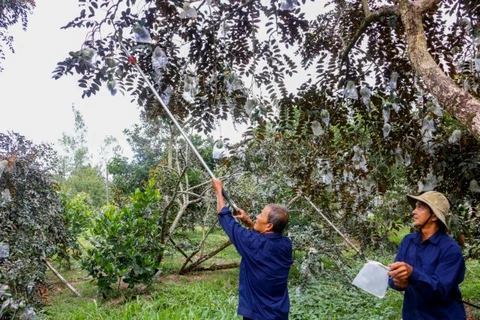 General Director of the General Statistics Office Nguyen Bich Lam speaks at the launch ceremony of the 2020 Vietnamese Cooperatives White Book on April 28 (Photo: VNA)
General Director of the General Statistics Office Nguyen Bich Lam speaks at the launch ceremony of the 2020 Vietnamese Cooperatives White Book on April 28 (Photo: VNA) Hanoi (VNA) – The General Statistics Office (GSO) unveiled the 2020 white book on cooperatives of Vietnam, the first of its kind, on April 28.
The paper provides information about the development levels of cooperatives in the country and its localities from 2016 – 2018. It also proposes solutions for cooperative development.
The white book was compiled based on data collected from the Ministry of Planning and Investment, the Ministry of Agriculture and Rural Development, and the Vietnam Cooperative Alliance.
It shows that 2,569 new cooperatives were established in 2018, adding up to a total of 22,861 by December 31, 2018. The figures respectively increase 9.5 percent and 8.8 percent year-on-year.
Also in 2018, the net revenue of the 13,958 surveyed cooperatives hit 88.59 trillion VND (about 3.77 billion USD), up 9.6 percent year-on-year. However, their pre-tax profit declined 27.8 percent to 2.57 trillion VND.
The monthly per capita income in those cooperatives was 3.84 million VND on average, increasing by 3.2 percent from 2017 but still much lower than 8.82 million VND in businesses.
GSO General Director Nguyen Bich Lam said the collective economy, of which cooperatives are the most important element, has gradually become a solid foundation of the national economy, and developing the collective economy is a consistent policy of the Party and State.
However, cooperatives still need to make strong reforms to develop amid the country’s intensive integration, he said./.
VNA
























